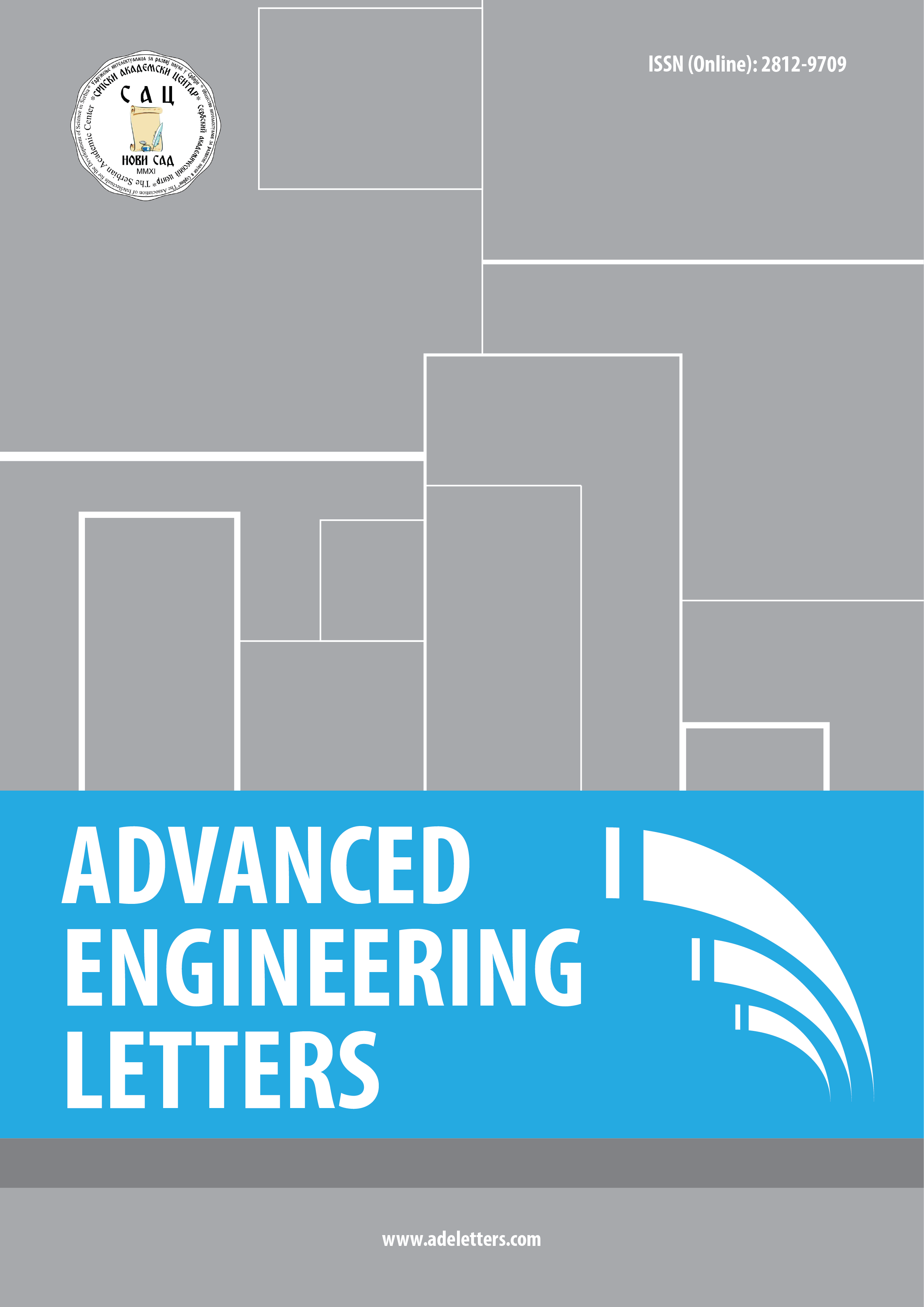ISSN (Online): 2812-9709
Journal Menu
Peer Review Process
Each submitted manuscript is evaluated on the following basis:
- The originality of its contribution to the field of scholarly publishing.
- The soundness of its theory and methodology given the topic.
- The coherence of its analysis.
- Its ability to communicate to readers (grammar and style).
Therefore, the manuscript submission and peer review process are broken down into the following steps:
- The author submits a manuscript.
- The Editor assigns reviewers to the manuscript.
- The reviewers review the manuscript.
- The Editor drafts a decision to be sent to the Author.
Authors can submit their manuscripts in Advanced Engineering Letters via the submission page. After submitting the manuscript, all authors will receive an acknowledgement confirming receipt and a submission ID number. The Editor-in-Chief first review manuscripts. The Editor-in-Chief is assisted by Section Editors or Members Editorial Board delegated by the Editor-in-Chief. The manuscript is checked to see if it meets the scope of the Journal and its formal requirements. If it is incorrect or unsuitable, the author should be informed and the manuscript is directly rejected. Manuscripts that are not suitable for publication in the Journal are rejected. A Rejection letter is sent to the author stating the reason for rejection. If the manuscript conforms to the aims and scope of the Journal and formally abides by the Instructions to Authors, it is sent out for review.
Before submission, authors should check that the manuscript is written and styled in accordance with the style of the journal, including an abstract (if applicable), keywords, appropriate reference system, etc.
Upon receiving the manuscript, the reviewer reads and evaluates the manuscript and finally sends a review report to the Editor-in-Chief. The optimal time for the review is up to 15 days, this time can be extended (up to 30 days) in agreement with the reviewers. The reviewer receives clear instructions for work, that is, a series of questions on which to give an opinion.
For each reviewed paper, the reviewer must give his opinion in the form of a recommendation:
- Accept Submission.
- Revisions Required.
- Resubmit for Review.
- Resubmit Elsewhere.
- Decline Submission.
Accept Submission
When a reviewer selects this recommendation, it means that the manuscript is suitable for publication in its current form. However, if the manuscript is accepted at the end of the review process, minor revisions may be needed (e.g., correction of typos, minor text changes, technical editing, clarification of key examples, arrangement of references, etc.).
Revisions Required
The reviewers’ recommendations mean “Accept the paper, but revisions are necessary”. Revisions will generally not affect the structure of the argument and the proposed analysis but may require significant rewriting for expository purposes. Reviewers agree not to request a new review of the corrected manuscript.
Some of the examples that characterize this reviewer’s recommendation are as follows: Some rewriting is needed to address certain areas where the manuscript is ambiguous and requires clarity; The quotes are appropriate but need to be revised, i.e. they can be limited or excessive; There are simple factual or numerical errors, which are easily corrected; There are problems with the presentation with tables and pictures, i.e. incorrect labelling, missing arrows, etc.; Ethics statements and consent statements are present and appropriate, but need to be reworded for clarity; Minor language changes are needed, i.e. repetition of statements, typos and spelling errors.
Resubmit for Review
Before resubmitting, the manuscript must undergo a major revision. The reviewers agree to review the revised manuscript until they make a final decision on its status.
Some of the examples that characterize this recommendation by the reviewer are as follows: Key elements are missing in the paper or not described in sufficient detail, which means that the study is unrepeatable and difficult to interpret; There are significant problems with the data and additional analysis or reanalysis is required; There are visible ethical issues of publication that require explanation, i.e. whether a similar work was published without proper acknowledgement or citation of the author, Lack of clarity regarding ethical approval or patient consent (we should have this information before review, but sometimes reviewers raise concerns that require investigation), significant language changes required, and major problems with figures and tables.
Resubmit Elsewhere
When reviewers make this recommendation, it really means “Decline submission.” The submitted manuscript is not suitable for the specified journal, with the reviewers providing useful advice to the authors on where the same manuscript could be published.
Decline submission
When the manuscript is of insufficient quality, novelty or importance to justify publication, the reviewers make a recommendation to reject the manuscript. Even when they reject a paper, editors are encouraged to share suggestions for improvement in the decision letter.
Upon receipt of the review, the Editor-in-Chief sends the review to the authors, rejecting the manuscript or asking the authors to revise their manuscript in accordance with the reviewers’ comments. If a revision of the manuscript is requested, the authors are given a period of 21 days. Upon receipt of the revised manuscript, it is re-sent to the reviewers who have requested to see the corrections. The above process is repeated until the reviewers either accept the manuscript for publication or reject it.
Papers accepted for publication are sent to the Technical Editor and Proofreader for final control.


